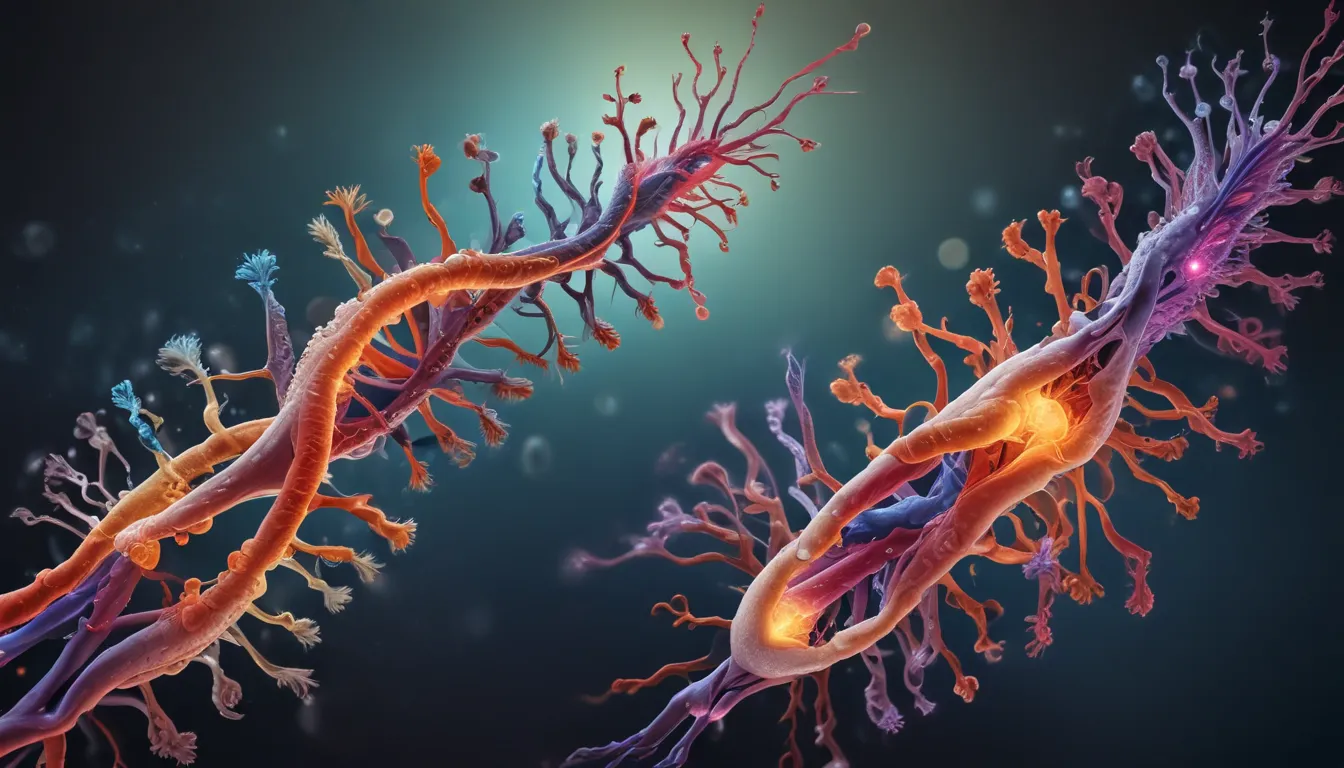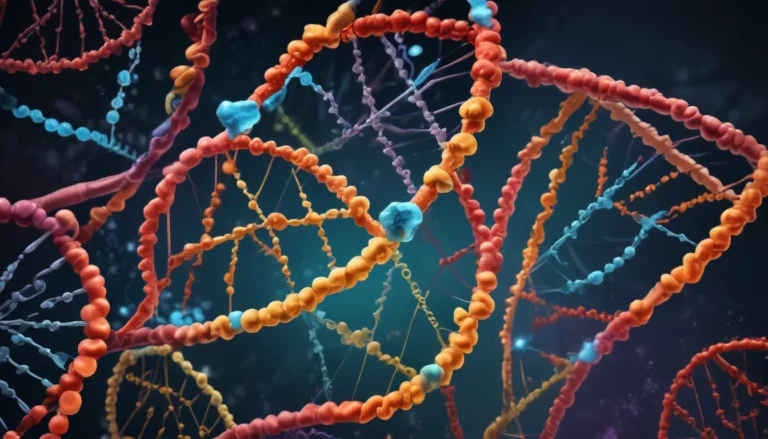A Note About Images: The images used in our articles are for illustration purposes only and may not exactly match the content. They are meant to engage readers, but the text should be relied upon for accurate information.
Are you curious about the inner workings of our cells and the fascinating role of telomerase in maintaining cellular health? Dive into the captivating world of telomerase function, where DNA protection, aging, and disease prevention intersect in a mesmerizing dance of biological processes. In this article, we will unravel 20 intriguing facts about telomerase function, shedding light on its significance in the realm of biology. Whether you are a seasoned biology enthusiast or simply curious about how our cells operate, these facts will open your eyes to the wonders of telomerase.
The Marvel of Telomerase: A Guardian of DNA Integrity
Telomerase, often hailed as the “immortality enzyme,” plays a crucial role in safeguarding our genetic material. By adding repetitive DNA sequences called telomeres to the ends of our chromosomes, telomerase ensures the stability and integrity of our DNA during replication. This superhero-like enzyme acts as a shield, preventing the loss of genetic information and preserving the longevity of our cells.
Preventing Genetic Erosion: The Crucial Role of Telomerase in DNA Maintenance
As cells divide, their telomeres naturally shorten, putting genetic information at risk. Telomerase steps in to counteract this process by adding telomeric repeats, preventing genetic erosion and maintaining the stability of our DNA. It’s like a guardian angel, protecting our genetic blueprint from deterioration.
Unlocking the Secrets of Cellular Longevity: Telomerase in Germ Cells and Stem Cells
Germ cells and stem cells possess the remarkable ability to divide indefinitely, thanks to their high levels of telomerase activity. This enzyme plays a pivotal role in preserving their longevity and functionality, showcasing its importance in sustaining the cycle of life.
The Symphony of Regulation: Complex Mechanisms Controlling Telomerase Activity
Telomerase activity is intricately regulated by various factors, including gene expression, protein interactions, and epigenetic modifications. This complex interplay dictates the level of telomerase activity in different cell types, highlighting the nuanced regulation of this vital enzyme.
Embracing the Passage of Time: Telomerase and Aging
As we age, our cells undergo division, leading to the gradual shortening of telomeres. Eventually, telomeres reach a critical length, triggering cellular senescence and age-related diseases. Telomerase dysfunction is implicated in this aging process, underscoring its significance in maintaining cellular health.
The Double-Edged Sword: Telomerase Activation in Cancer
In cancer cells, telomerase is often reactivated, allowing them to maintain telomere length and replicate indefinitely. This activation of telomerase is a hallmark of cancer development, highlighting its dual role in both preserving cellular function and fueling cancer progression.
Nurturing Life: Telomerase in Embryonic Development
During embryonic development, telomerase activity is high, promoting cell proliferation and differentiation. This critical role of telomerase in early development underscores its importance in shaping the foundation of life.
Lifestyle Choices and Telomerase Activity
Stress, exercise, and diet can influence telomerase activity, emphasizing the impact of lifestyle factors on maintaining telomere length. A healthy lifestyle may contribute to optimal telomerase function, offering a pathway to cellular well-being.
Unveiling the Fountain of Youth: Telomerase Research and Anti-Aging Therapies
Scientists are delving into the potential of manipulating telomerase activity to extend cell lifespan and combat aging. These groundbreaking discoveries hold the promise of innovative anti-aging therapies, paving the way for a healthier, longer life.
Beyond Telomere Maintenance: The Multifaceted Roles of Telomerase
Recent studies suggest that telomerase may have additional functions beyond telomere maintenance, such as DNA repair and gene expression modulation. This expanding repertoire of roles showcases the versatility of telomerase in cellular processes.
Dance of Proteins: Telomerase Interactions in Cellular Function
Interactions with other proteins are essential for telomerase recruitment to telomeres and its proper functioning in maintaining telomere integrity. This intricate network of protein interactions orchestrates the symphony of telomerase activity in our cells.
Cell-Specific Telomerase Activity: A Tapestry of Diverse Functions
Telomerase activity varies among different cell types, reflecting the diverse functions of telomerase in different tissues and organs. Some cells exhibit high levels of telomerase activity, while others show limited or no activity, underscoring the specialized roles of telomerase in cellular dynamics.
A Universal Guardian: Conservation of Telomerase Function Across Species
From yeast to humans, telomerase operates with a similar mandate to maintain telomere length and prevent genomic instability. This conservation of function underscores the fundamental importance of telomerase in cellular health across diverse species.
Telomerase as a Diagnostic Tool: Biomarker Potential for Disease Detection
Telomerase activity levels have been linked to various diseases, serving as a potential biomarker for conditions such as cancer, cardiovascular disorders, and neurodegenerative diseases. This diagnostic utility of telomerase highlights its clinical relevance in disease detection and monitoring.
Visionaries in Science: Elizabeth Blackburn and Carol W. Greider
The pioneering work of Elizabeth Blackburn and Carol W. Greider led to the discovery of telomerase, earning them the Nobel Prize in Physiology or Medicine in 2009. Their groundbreaking research paved the way for a deeper understanding of telomerase function and its implications in health and disease.
Embryonic Symphony: Regulation of Telomerase Expression in Development
During embryonic development, telomerase expression is high, facilitating cell proliferation and differentiation. However, as cells differentiate into specific tissues, telomerase activity decreases, reflecting the dynamic regulation of this enzyme during development.
Targeting Telomerase: A Therapeutic Approach to Cancer Treatment
Various strategies are being explored to selectively inhibit telomerase activity in cancer cells, offering a potential avenue for cancer therapy. By targeting telomerase, researchers aim to disrupt the relentless growth of cancer cells and improve treatment outcomes.
The Elixir of Youth: Telomerase and Longevity in Species
Certain species possess naturally high levels of telomerase activity, potentially contributing to their extended lifespan. This link between telomerase activation and longevity hints at the role of telomerase in shaping the lifespan of organisms across different species.
Genetic Harmony: Telomerase Dysfunction in Genetic Disorders
Mutations in telomerase genes or regulatory factors can lead to telomere shortening, resulting in genetic instability and the development of inherited diseases. Telomerase dysfunction is implicated in a range of genetic disorders, highlighting its importance in maintaining genetic harmony.
Endless Exploration: Unraveling the Complexities of Telomerase Function
Telomerase research continues to reveal new insights into its intricate mechanisms and biological significance. Scientists are dedicated to exploring the multifaceted roles of telomerase, deepening our understanding of this enigmatic enzyme and its potential therapeutic applications.
Conclusion: Navigating the Realm of Telomerase Function
In conclusion, telomerase function is a captivating journey into the heart of cell biology, where DNA protection, aging, and disease intersect in a delicate balance. This vital enzyme not only sustains cellular health but also holds the key to unlocking innovative therapies for aging and disease. As research progresses, the mysteries of telomerase continue to unfold, offering new possibilities for enhancing human health and longevity.
FAQs: Unveiling the Mysteries of Telomerase
-
Q: What is telomerase?
A: Telomerase is an enzyme that adds repetitive sequences to the ends of chromosomes, known as telomeres. -
Q: How does telomerase function?
A: Telomerase functions by elongating telomeres, ensuring the stability and integrity of genetic material during cellular replication. -
Q: Why is telomerase important?
A: Telomerase is important because it prevents telomere shortening, which can lead to cellular dysfunction, aging, and age-related diseases. -
Q: Where is telomerase found?
A: Telomerase is found in specific cell types, including stem cells, germ cells, and certain cancer cells. -
Q: Can telomerase be targeted for therapeutic purposes?
A: Yes, targeting telomerase is a potential strategy for developing anti-aging treatments and therapies for various diseases, including cancer. -
Q: Does telomerase play a role in cancer?
A: Yes, telomerase is often activated in cancer cells, allowing them to maintain telomeres and divide indefinitely. -
Q: Can telomerase activity be increased?
A: Research is ongoing to explore how telomerase activity can be augmented or regulated, opening new avenues for medical interventions.
Uncover the marvels of telomerase function and delve into the intricate world of cellular health and longevity. By exploring the realms of telomerase, we gain a deeper appreciation for the delicate mechanisms that shape our biological existence. Join us on this enlightening journey of discovery, where each fact uncovers a new facet of the astonishing role of telomerase in maintaining the essence of life. Let the wonders of telomerase function inspire you to embrace the mysteries of cellular biology and unlock the secrets of longevity and vitality.






